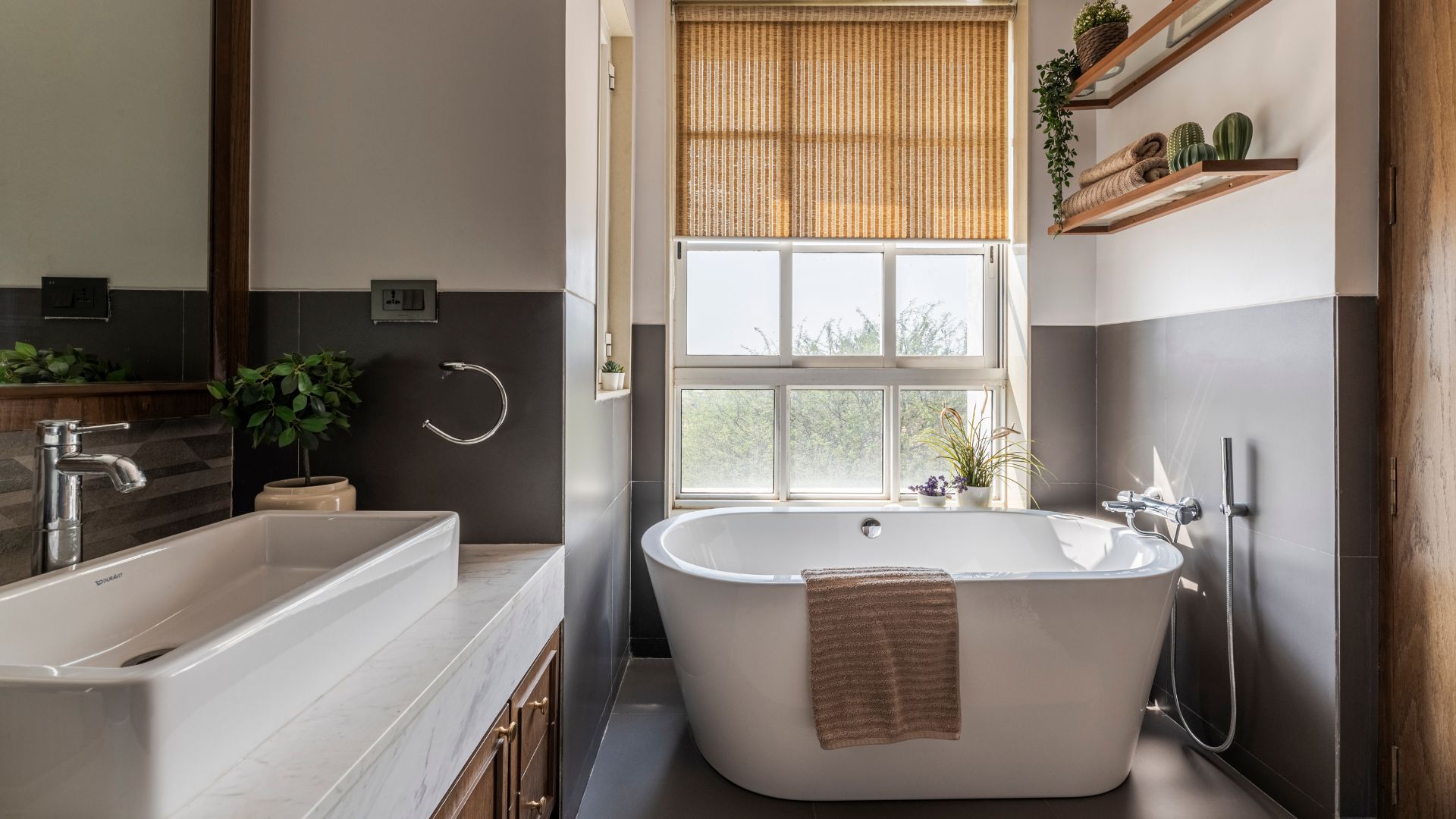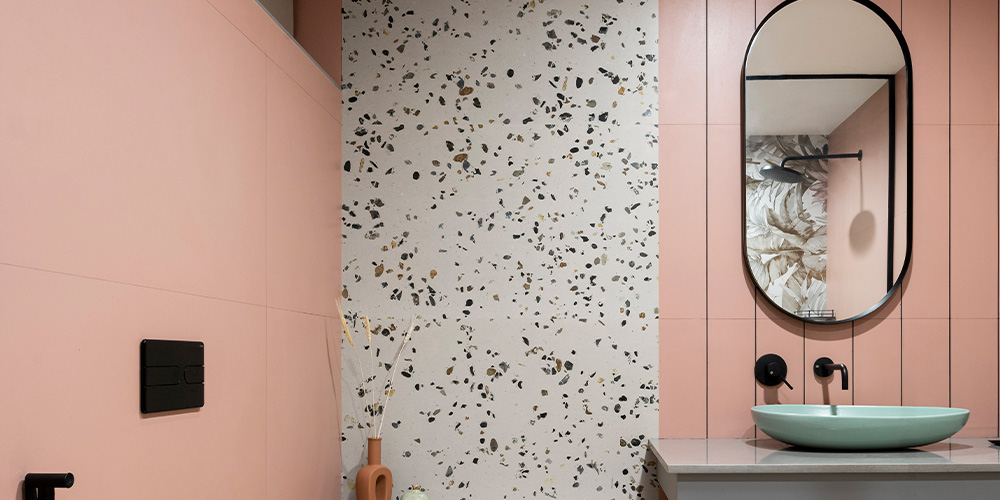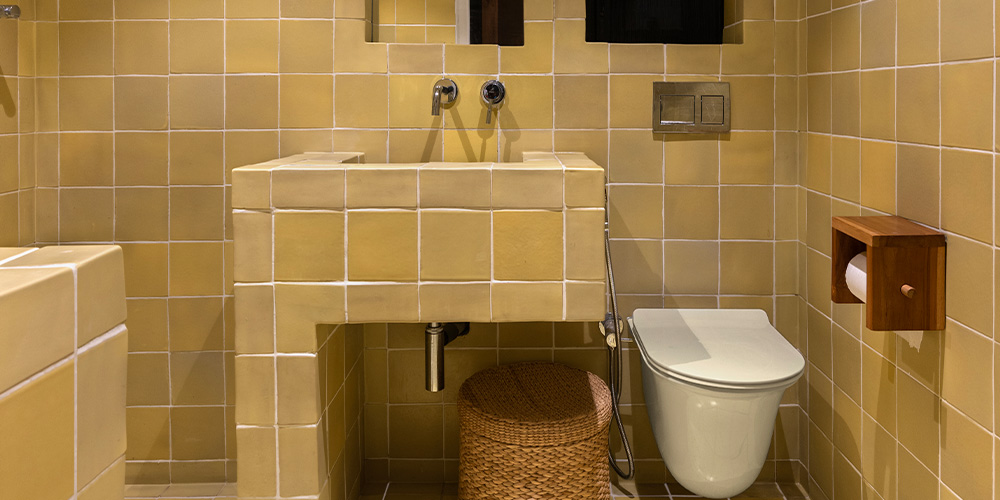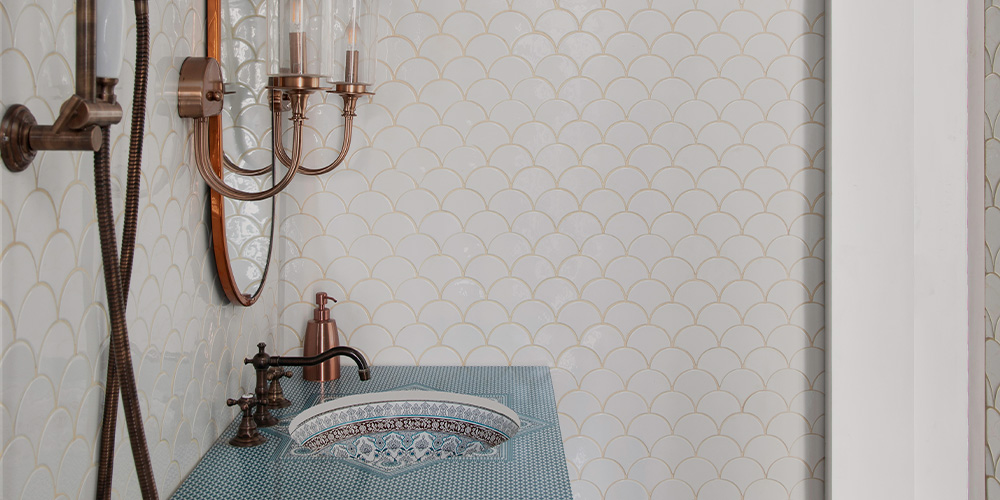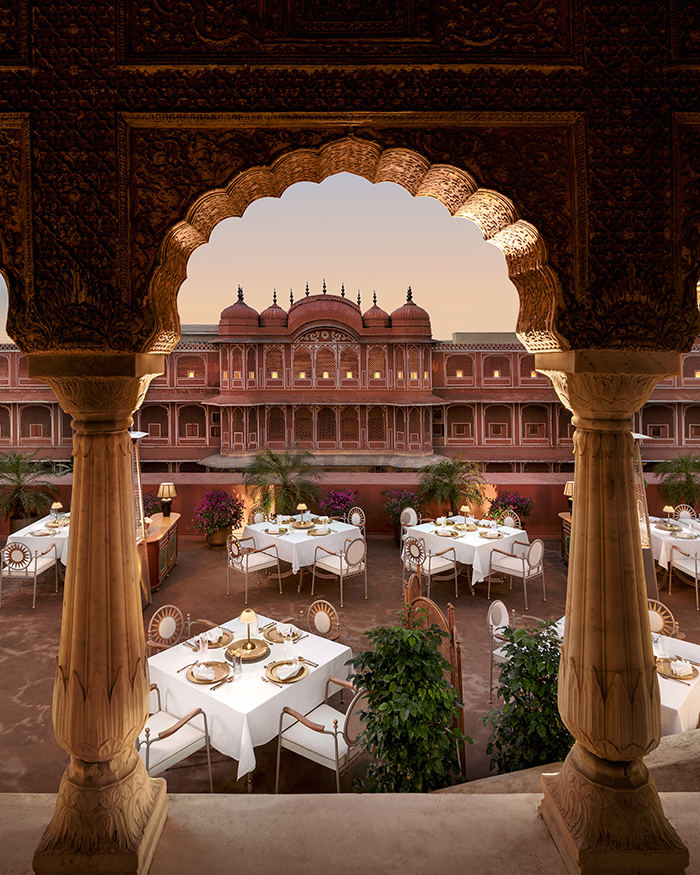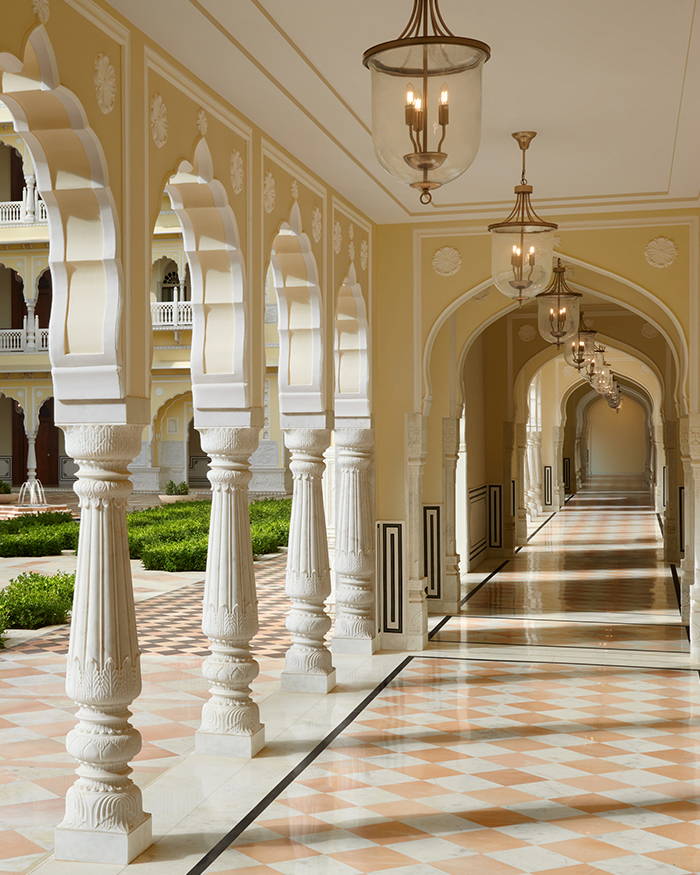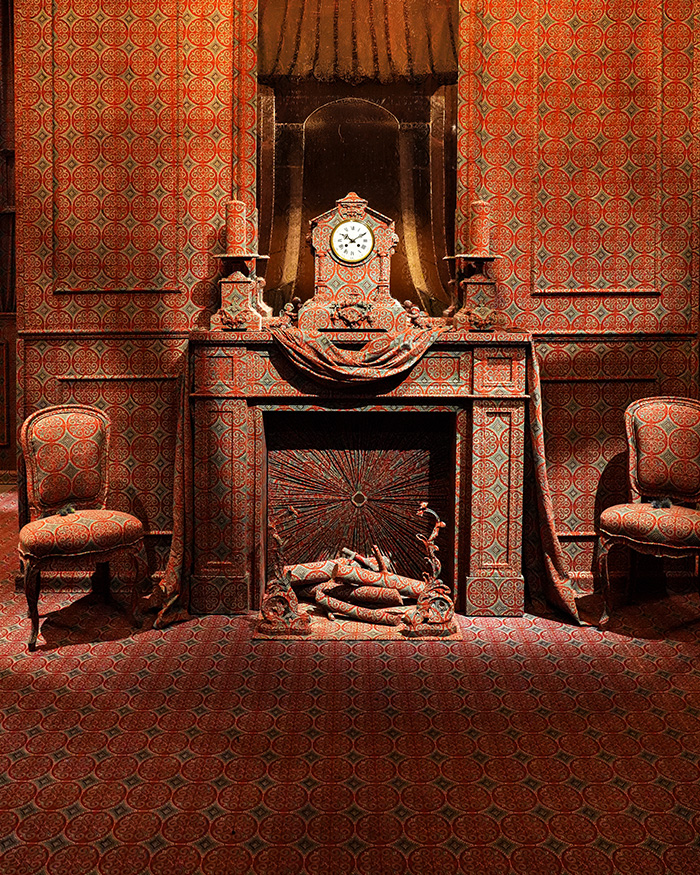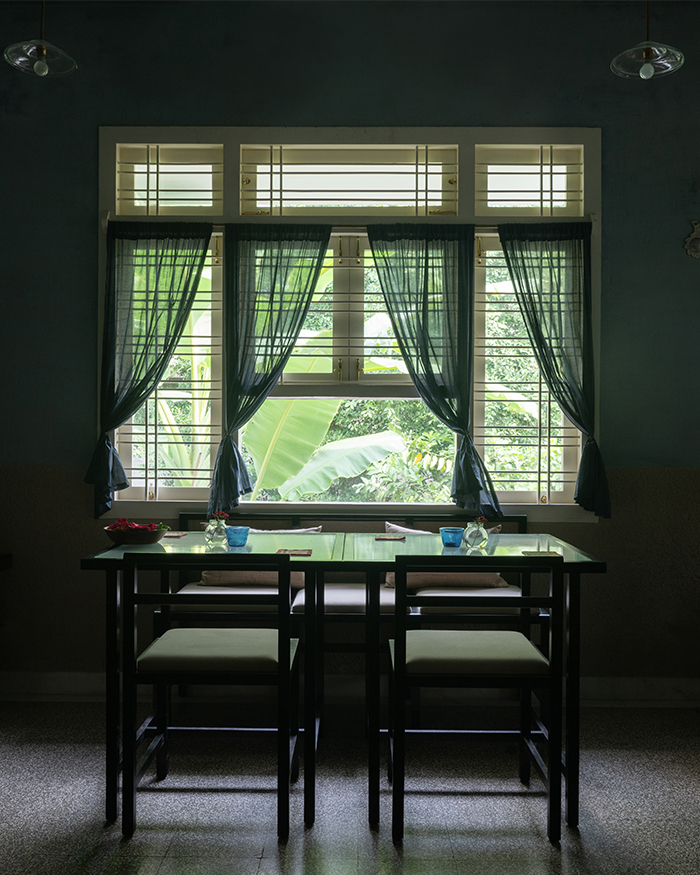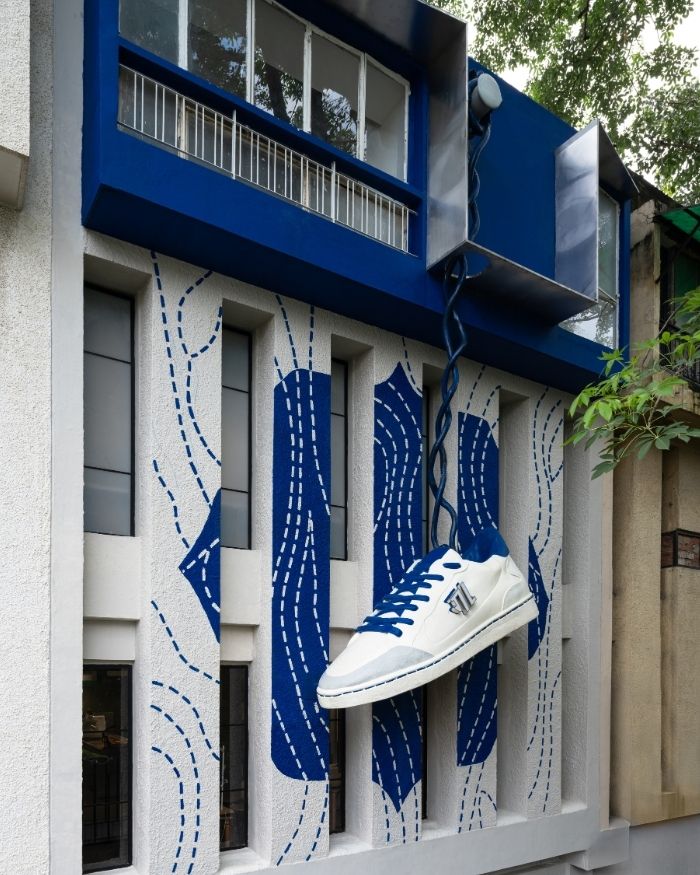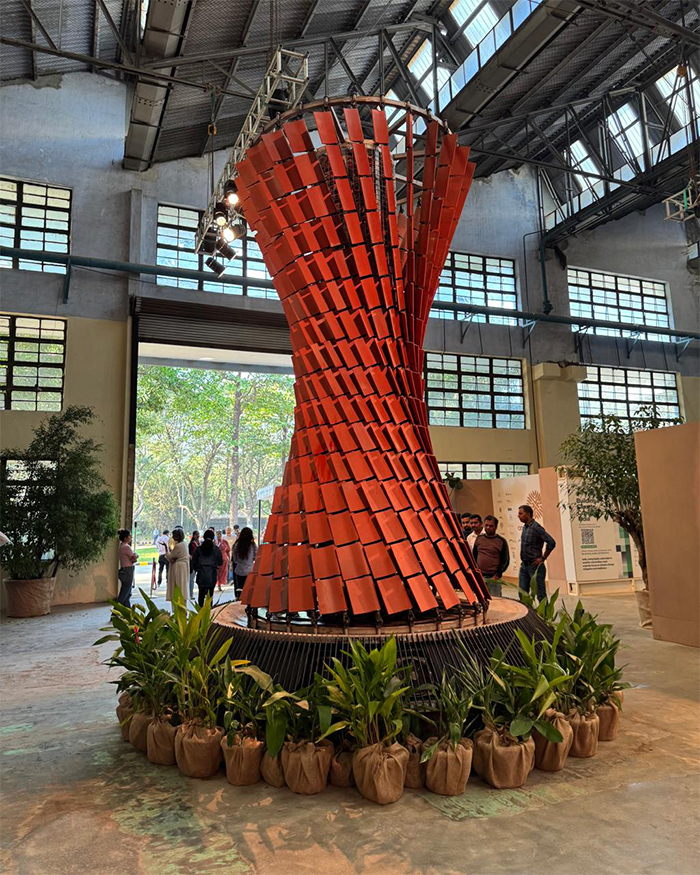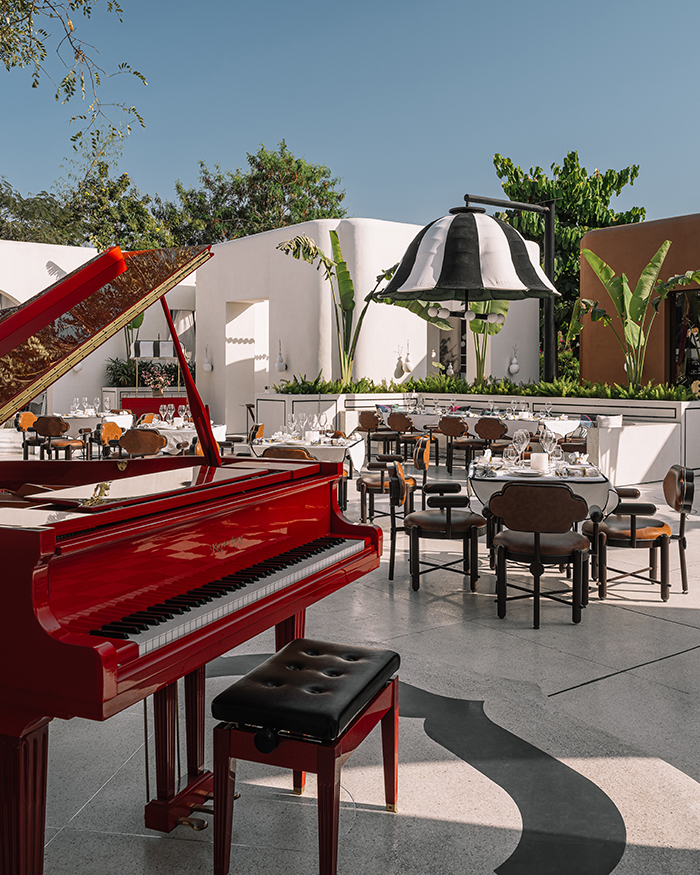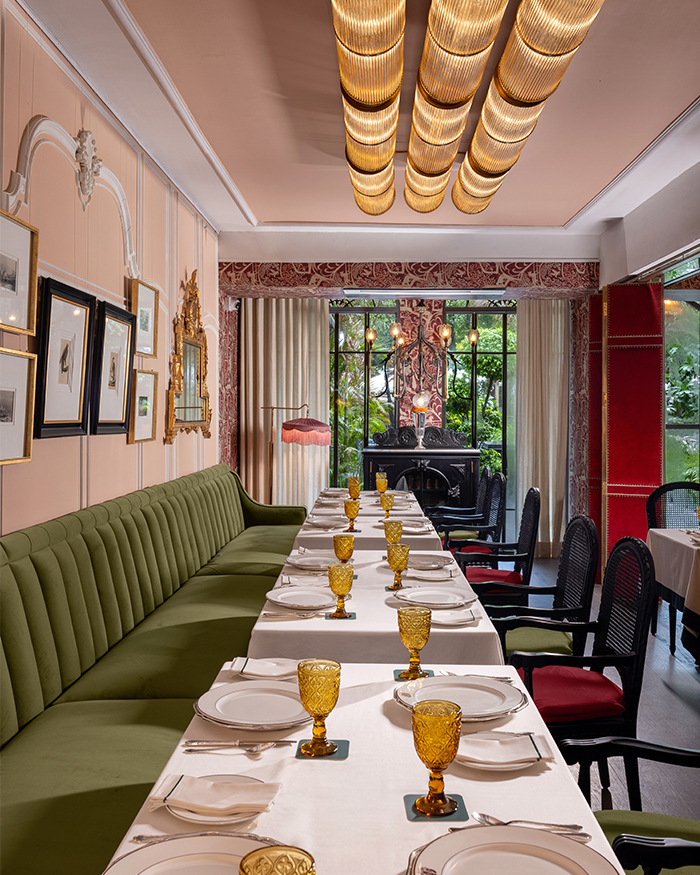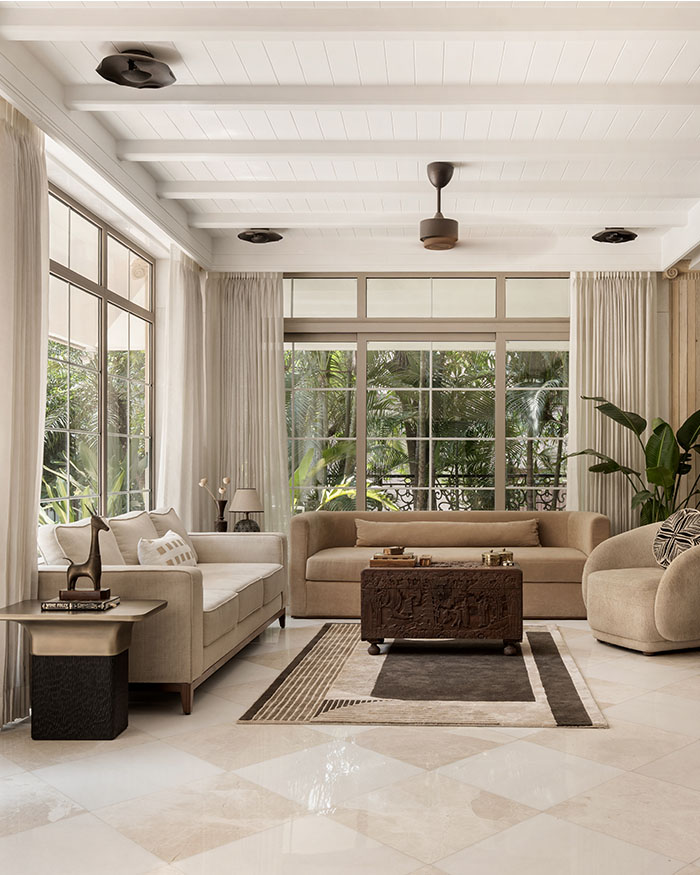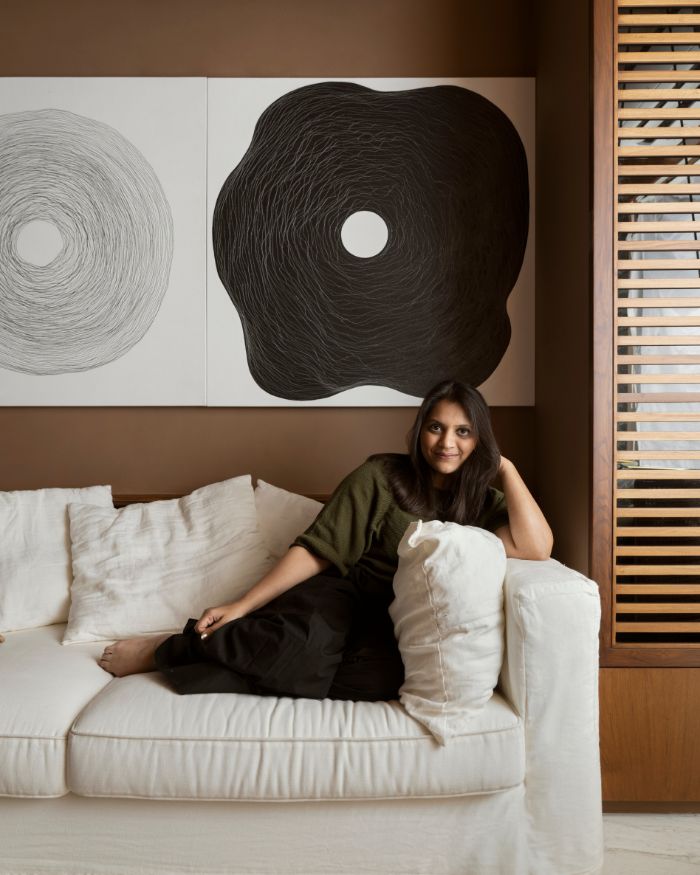For some, self-care is a luxurious two-hour soak in the tub. For others, it’s unwinding in a jacuzzi, savouring a rejuvenating spa session. Self-care is an indulgent journey unique to each individual. Here’s what your self-care ritual might be missing – a bathroom designed to your unique taste. From futuristic blues and metallic accents to boho-chic resorts awash in butter-yellow hues, here’s ELLE DECOR India’s selection of 10 best bathroom interior trends. You might just find the perfect style that matches your out-of-the-box flair.
Midnight Blues by Aavishkar Architects
This bathroom hums the tunes of future nostalgia, a seamless blend of modern and minimalist design. Concrete floors and walls provide an industrial backdrop for the metallic elements to shine. The metallic fixtures, vessel basins and dark-coloured vanity add a touch of experimental sophistication as if borrowed from a retro-futuristic film set. A clean colour palette of cool blues and greys along with statement fixtures, exudes luxury without being ostentatious.
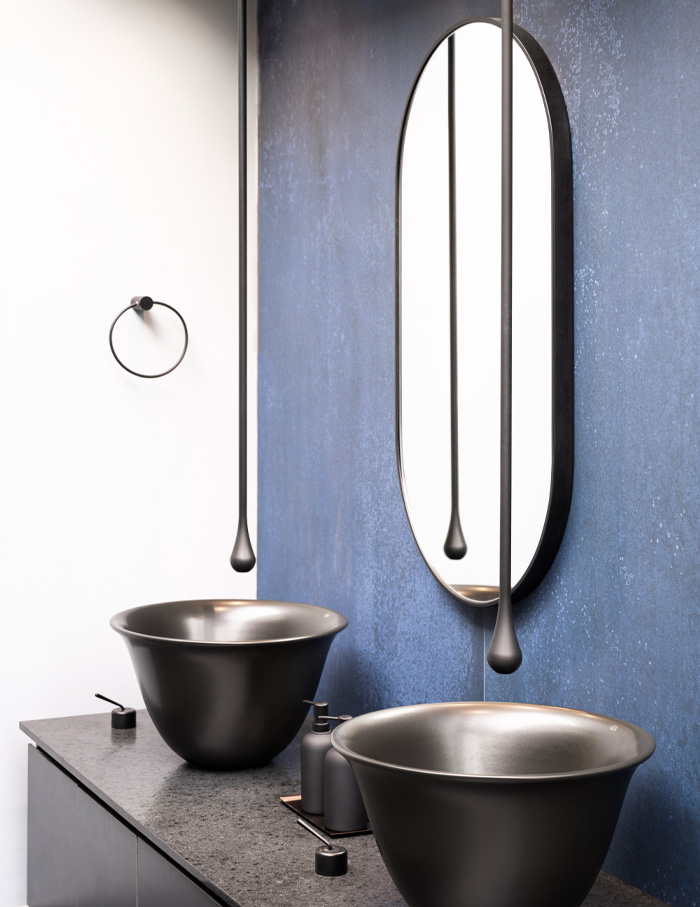
The Unexpected Blue Theory by Aavishkar Architects
Pristine marble walls, gilded frames and opulent lighting make for a luxurious retreat. Allow us to introduce you to the next design revelation – the unexpected blue theory. This timeless bathroom features delicate gold fixtures and white marble-like tiles with grey veining juxtaposed against a bold blue vanity. Often associated with calmness, a pop of blue is all a minimalist bathroom palette needs to manifest quietude in your ritual skincare routine.

Blush and Bashful by Aavishkar Architects
One of the most decadent bathroom interior trends – soft pinks with a dash of mints and speckled white walls. The terrazzo floor tiling that extends to the wall creates continuity and cohesion. Speckled white walls add visual interest and texture, while the contrast between the bold black and the pastel pinks adds depth to the space. Functional elements like the floating vanity, the simple black fixtures give the space a decluttered feel, adding a sense of openness and simplicity. So here’s the recipe for a strawberry matcha latte- soft pastel pinks and speckled whites topped off with a hint of mint.
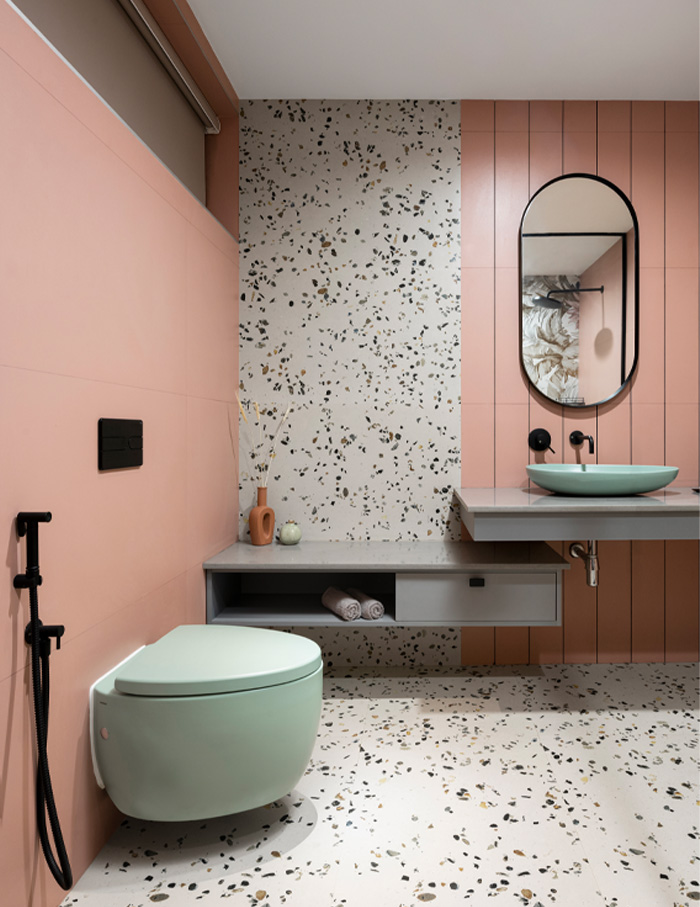
An elegant escape with Eisa Associates
A hidden doorway from the dressing room leads to this marvellous bathroom. Marble in its various treatments envelops the space, from its floors, walls and the customised basin to the various textures and finishes to add depth to the space. The grey marble accent wall serves as a backdrop for the intricately carved basin. A blend of form and function, the thoughtfully planned mirrored doorway, the use of the durable marble and the consistent grey and white theme creates a cohesive sanctuary.
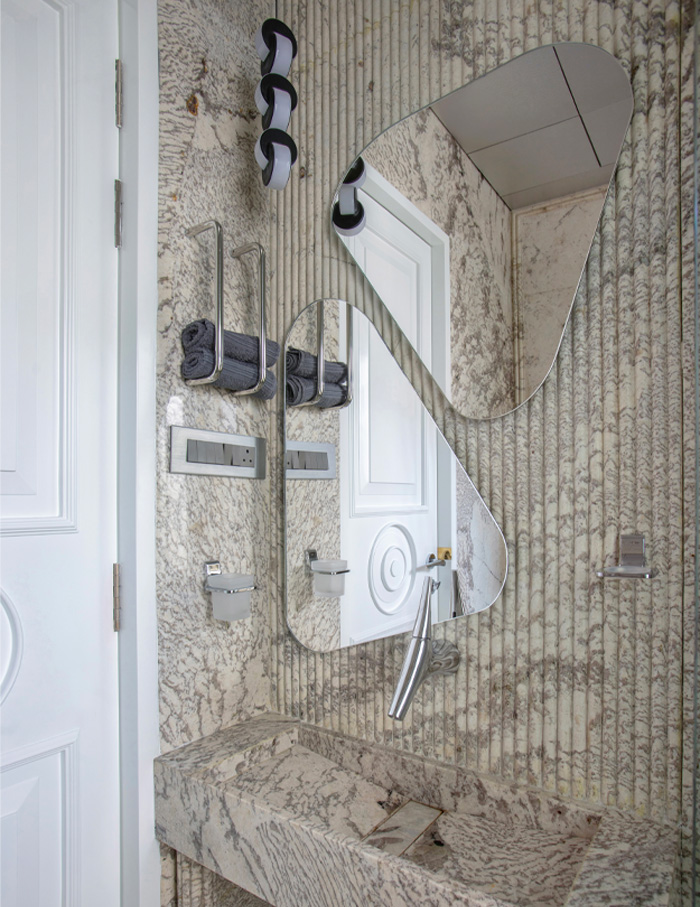
Bois noir bliss by Hipcouch
Renovated by Ridhi Agarwal and Parikshat Hemrajani of Hipcouch, stepping into this bathroom feels like entering an elevated wellness retreat. The chandelier and the glint of the ornate mirror add a luxurious touch, to the sleek noir recesses. The mosaic tile flooring with warm wooden elements like the vanity creates a vintage ambience. The fresh flowers on the countertop add a natural touch softening the bold palette. The mantra to a bathroom that feels like a wellness retreat – wooden furniture, gilded elements, mosaic tiles and black walls.
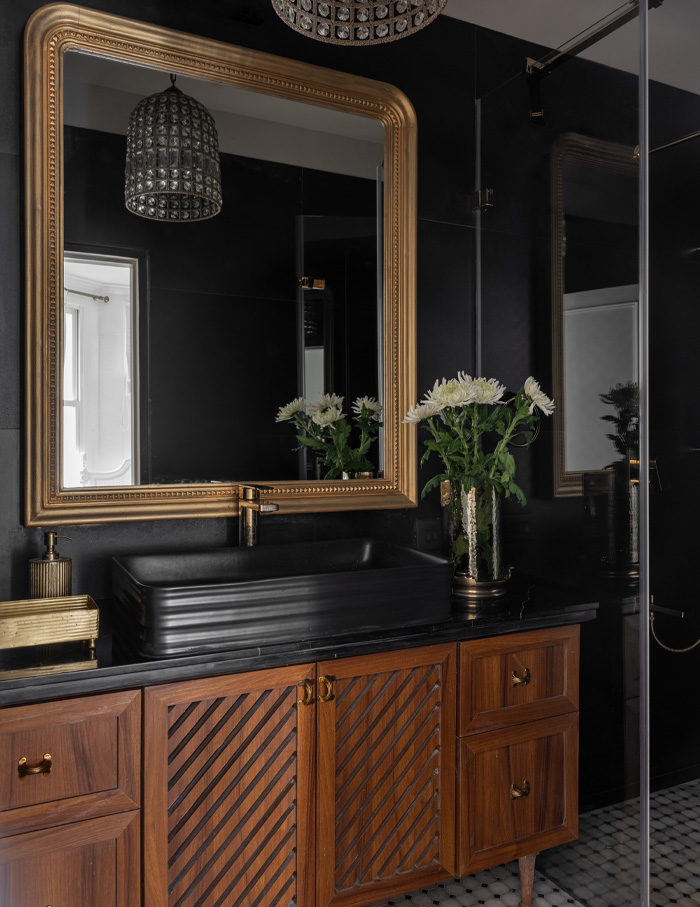
Butter yellow bohemian by MT Designs
Yellow for the moodboard, anyone? This bathroom designed by MT Designs, looks like a soothing setting right out of a modern-bohemian resort draped in striking shades. With butter-yellow tiles that reach the ceiling and a sense of continued linearity alongside the wicker basket, the design elements come together to create a cosy space. The focal point here is the pedestal sink that blends with the interiors. The basic ingredients for making your bathroom feel like a breezy vacation at a resort – wicker baskets, natural elements and butter yellow tiles!
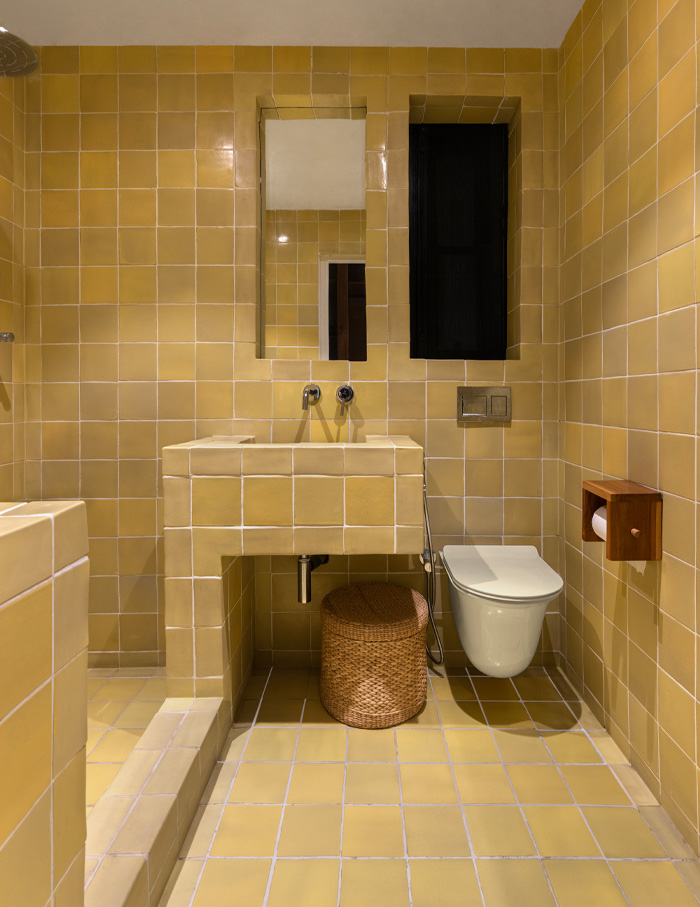
Bare necessities by MT Designs
MT Designs punctuated the rustic shades of concrete with brazen elements to create a chic yet warm industrial bathroom. One of the essential bathroom interior trends, this space defines the combination of functional, modern and inviting. The concrete countertop, unfinished walls and textured tiles create a raw-industrial style space. The light fixtures and natural textures imbue warmth, while the sleek basin and the irregular mirror add a modern touch to the bathroom. This space is the perfect blend of industrial chic and modern elegance.
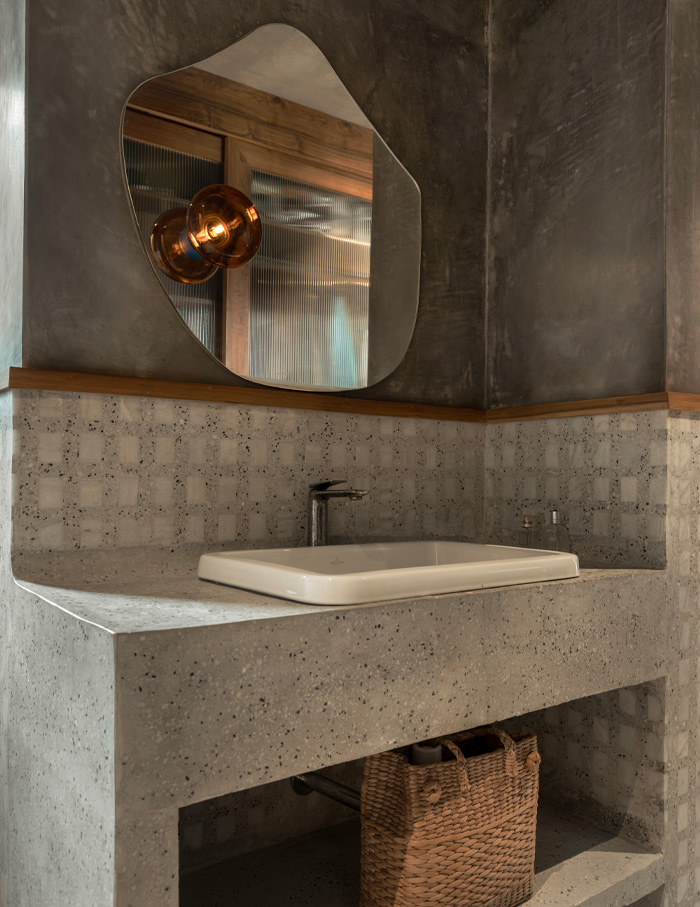
A spa-cious retreat by Studio Jane
Lessons on pure indulgence to take a break from the hubbub of a fast-paced life by Studio Jane results in a canvas of monotoned marble, jacuzzi and a touch of verdure. The marble enhances the perception of spaciousness ensuring a sense of continuity to the space. The terracotta-toned vanity contrasts the cool hues of the marble. The mirror partition visually divides the space, creating a secluded space for the jacuzzi area. And the cherry on the top for a bathroom that feels like a retreat to destress is the jacuzzi, a key element. With a play on spatial perception, functional elements, clean lines and a minimalist colour palette with touches of warm hues, this space strikes a visual balance.
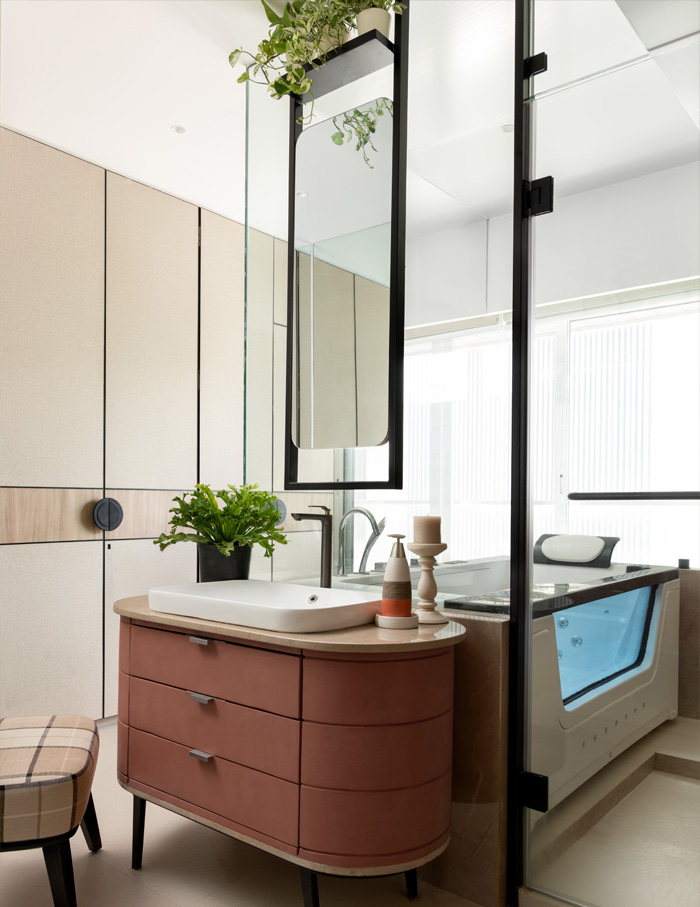
The powder room exemplifies the beauty of Indian decor artistry. The fish-scaled white tiles on the walls paired with brass accented mirror and neo-classic wall sconces add to the artistic charm. The Kolher wash basin with brass-crafted legs and the custom ceiling brings a sophisticated touch. The natural touch added by the plants ground the space, tying the elements together.
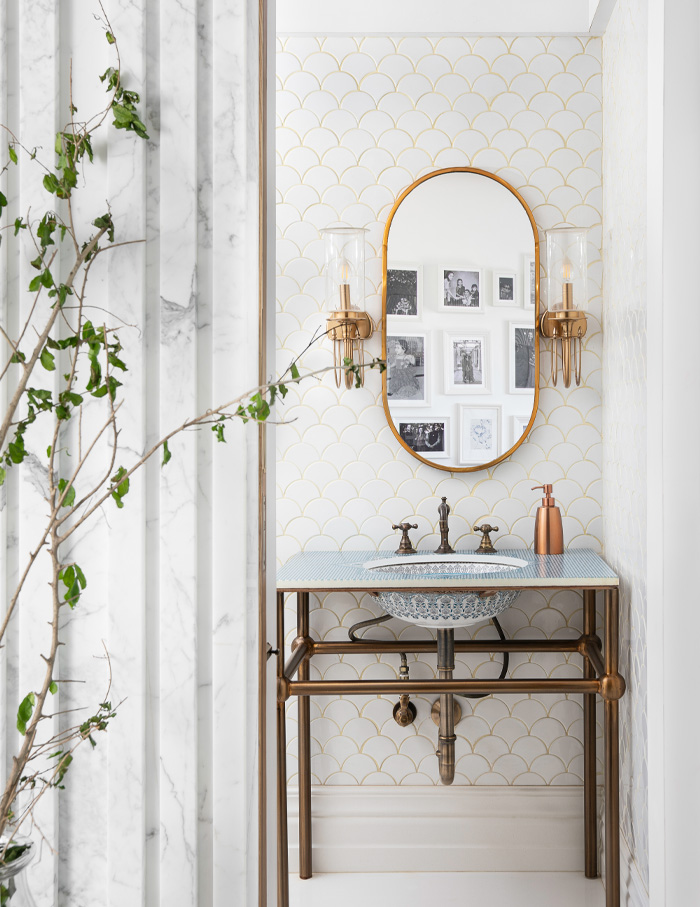
Jazz jam by The Little Design Story
The warm beige tones, rich wooden elements, subtle hints of bronze and deep black accents in this bathroom by The Little Design Story evoke the sophisticated ambiance of a jazz club. The beige tones of the walls create an inviting backdrop for the framed circular mirrors, wall painting and the wooden countertop and dark panelling. A refined sense of comfort takes over the space, accentuated by the warmth of the wooden countertop and the mellow lighting. All of the design elements come together to compose a laid-back yet sophisticated melody.
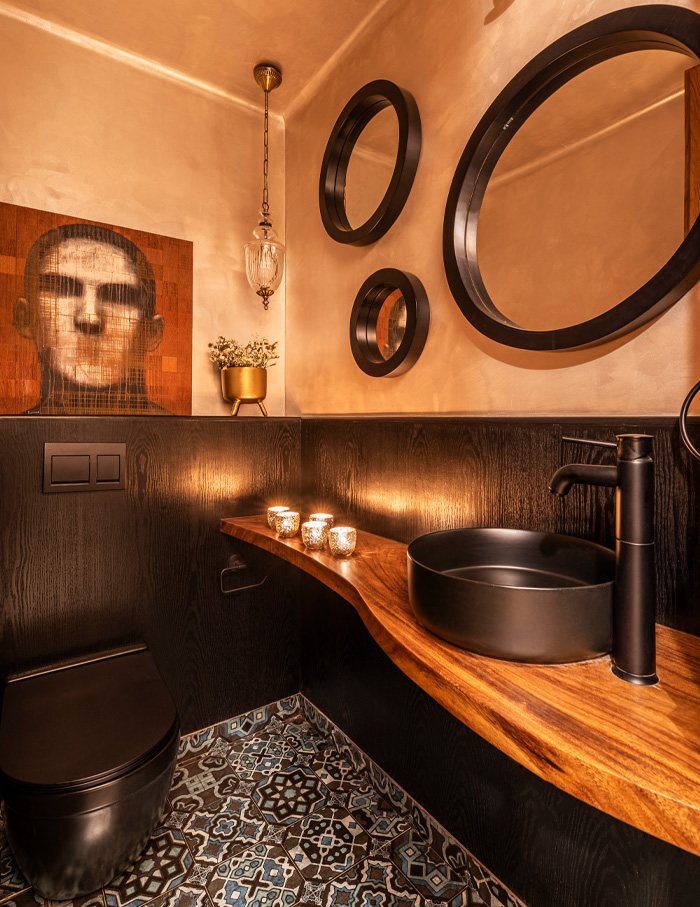
Sunlit vanity by The Little Design Story
A marble countertop and a rich wooden cabinet in this powder room by The Little Design Story speak for the beauty of minimalist sensibilities, one of the best bathroom interior trends for the savants of minimalism. The white marble countertop with gray veining exude understated luxury, the under-mount sink makes the space look seamless. The mirror placed in the centre enhances the symmetry of the design. Natural light filters in and reflects off of the white walls and the sunflower on the countertop brings a sense of warmth to the space.
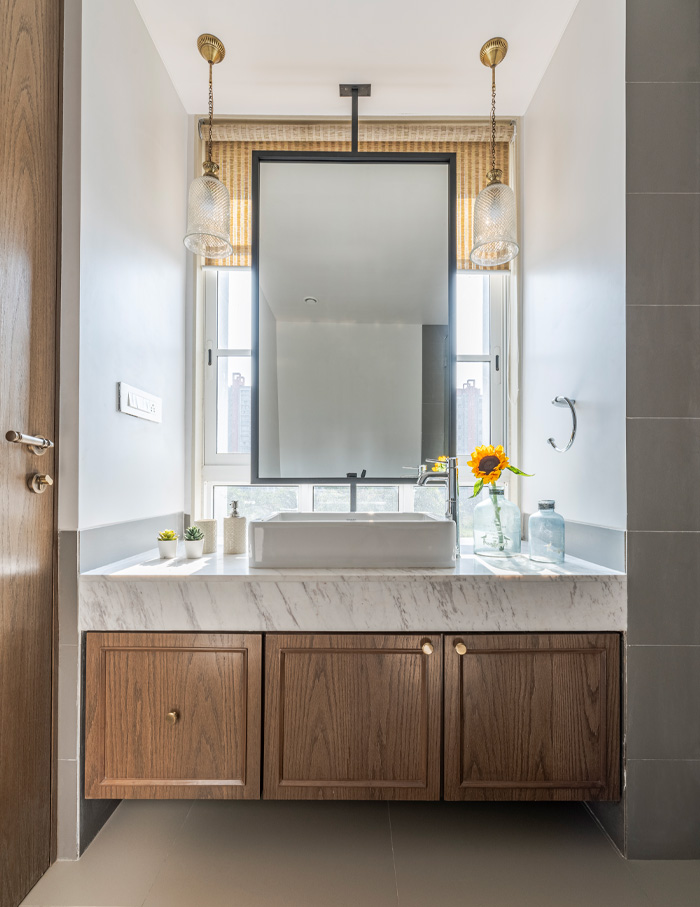
Read More: 8 colourful bathrooms to shower your life with some eclectic hues

